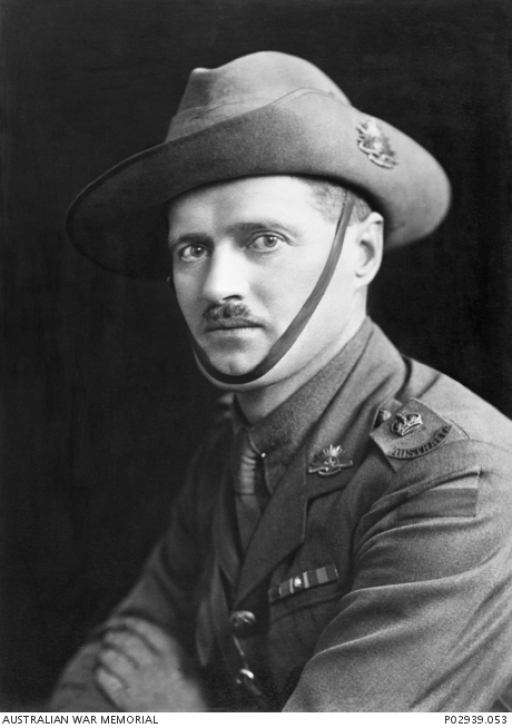The medals of Australia’s most decorated soldier of the First World War are to go on display at the Australian War Memorial after being presented to the museum in Canberra by his family.
Lieutenant Colonel Henry William Murray’s honours include the Victoria Cross.
Harry Murray received the highest Commonwealth award for gallantry for leading his men with ‘sheer valour’ during a night attack in France in 1917.
He had a spectacular rise through the ranks, going from private in 1914 to lieutenant colonel four years later.
Lt Col Harry Murray VC CMG DSO & Bar DCM was described by historian Charles Bean as the most distinguished fighting officer of the Australian Imperial Force.
His medals were presented to the Director of the Australian War Memorial, Dr Brendan Nelson, at a ceremony on September 10th 2015.
They will go on long-term display in the Memorial’s Hall of Valour in the coming weeks.
“All Australians will now be able to see proof of the incredible achievements of Lieutenant Colonel Henry William Murray on display at the Australian War Memorial. We are truly grateful to his family for this selfless gesture,” Dr Nelson said.
“These medals will form an integral part of the continuing story of our Anzacs, and serve as a reminder of the bravery and daring shown by Australians in the Great War.
“Amid great battles and the movements of armies, the exploits of courageous individuals have always provided inspiration. Those Australians who were awarded the Victoria Cross are honoured in the Memorial’s Hall of Valour. It is our nation’s highest award for bravery in time of war, and recognises the deeds of ordinary Australians under the extraordinary conditions of war.”
Harry Murray’s Victoria Cross was the first of 18 VCs awarded to Australians in 1917.
On the night of February 4th/5th, Murray led the 13th Battalion’s A Company into an attack on a German position known as Stormy Trench, near Gueudecourt in the Somme.
His citation for the Victoria Cross read:
‘For most conspicuous bravery when in command of the right flank company in attack. He led his company to the assault with great skill and courage, and the position was quickly captured. Fighting of a very severe nature followed, and three heavy counter-attacks were beaten back, these successes being due to Captain Murray’s wonderful work. Throughout the night his company suffered heavy casualties through concentrated enemy shell fire, and on one occasion gave ground for a short way. This gallant officer rallied his command and saved the situation by sheer valour. He made his presence felt throughout the line, encouraging his men, heading bombing parties, leading bayonet charges, and carrying wounded to places of safety. His magnificent example inspired his men throughout.’
Harry Murray continued to serve with distinction, fighting at the First Battle of Bullecourt in April 1917. He was also in action at Messines and the Third Battle of Ypres in Belgium.
In 1939 he enlisted once more and served during the Second World War.
Source: Australian War Memorial
Images courtesy of the Australian War Memorial (P02939.053/Public Domain)
Posted by: Peter Alhadeff, Centenary News
